
Triacylglycerol remodeling to synthesize unusual fatty acids in plants
Plant Science Research WeeklyPlant oils, composed of fatty acids, provide humans and animals with food, essential nutrients, chemicals, and biofuels. Plants accumulate over 450 “unusual” fatty acids, which could hold significant value if they achieve optimal production. Hydroxylated fatty acids (HFA) are unusual fatty acids…
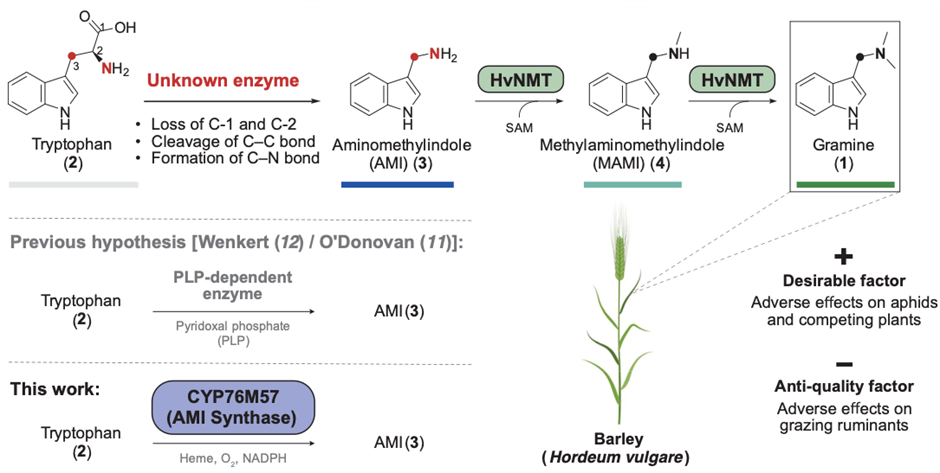
Unlocking nature’s arsenal: Engineering grasses for insect defense and livestock palatability
Plant Science Research WeeklyThe defensive alkaloid gramine, present in barley and other grass species, plays an important role in protecting the plant from insect damage but poses challenges for ruminant palatability. Breeding strategies balance these factors by maintaining the protective function and making the grain palatable…

Understanding the role of metabolites in the evolution of C4 photosynthesis
Plant Science Research WeeklyPlants that use C4 photosynthesis, whereby carbon is concentrated around RuBisCo in bundle sheath cells, have high water and nitrogen use efficiencies. Thus, understanding how C4 photosynthesis evolves is of much interest. The Flaveria genus provides a unique opportunity for this, as it contains species…

SIMPEL tool to elucidate dynamics of complex metabolism
Plant Science Research WeeklyCellular metabolism involves flux through metabolic routes, which can be measured using stable isotope (13C,15N) tracers. High-resolution mass spectrometry (HRMS) and transient isotope labeling studies offer an opportunity to get an in-depth understanding of metabolism in specific contexts. In this new…
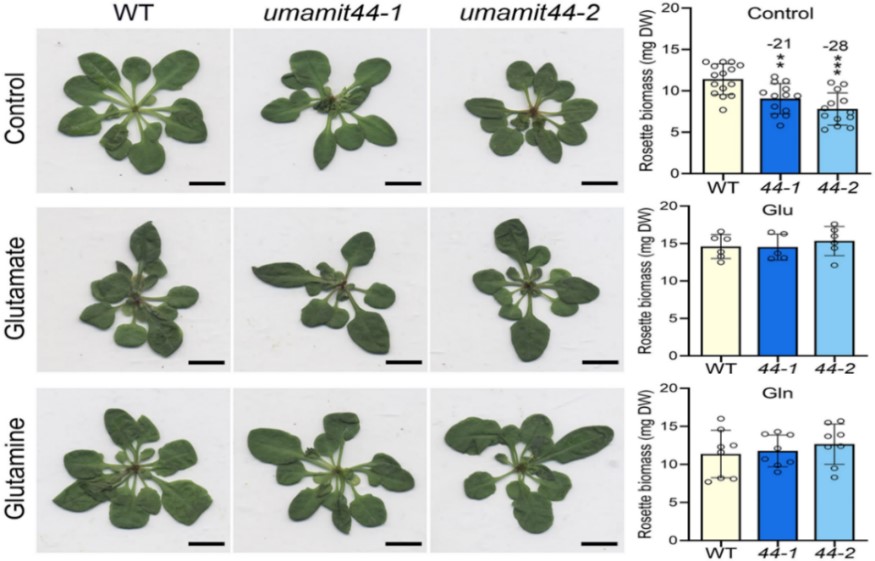
UMAMIT44 exports plastidial glutamate and is essential for plant growth
Plant Science Research WeeklyAmino acids (AA) are fundamental components of peptides, proteins, and enzymes that play a critical role in plant growth, cellular metabolism, and stress response. Plants synthesize most AA within chloroplasts and require membrane transporters to transfer them from stroma to cytosol. Cytosolic AA are…

Branched chain amino acids accumulation contributes to drought tolerance in rice
Plant Science Research WeeklyThe accumulation of metabolites such as proline as compatible osmolytes is a protective mechanism against drought stress in plants. Similarly, under drought conditions, there is an observable increase in the accumulation of branched-chain amino acids (BCAAs), including the essential amino acids isoleucine,…
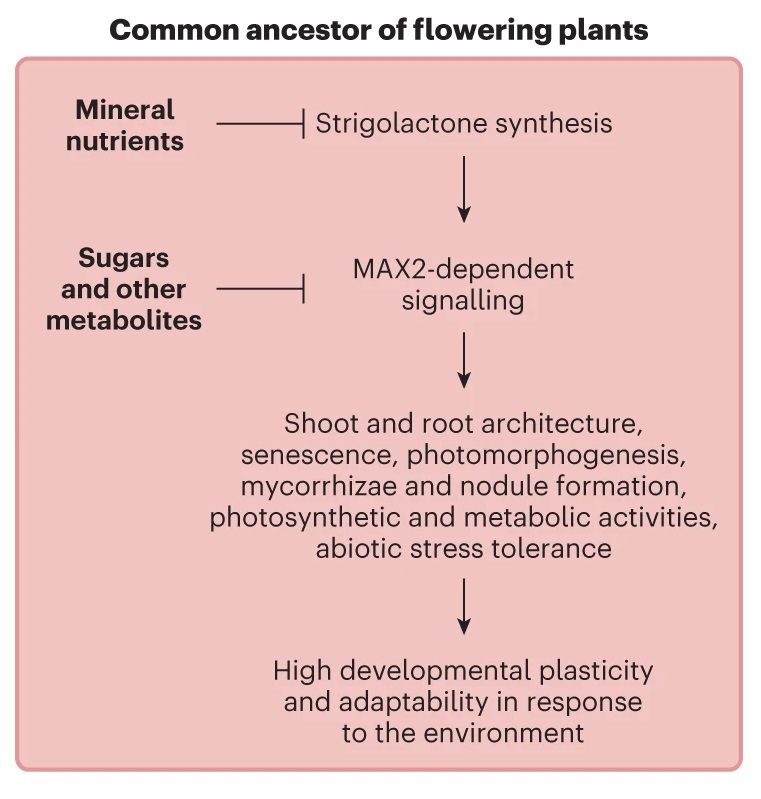
Review: Strigolactones integrate metabolic and nutritional signals
Plant Science Research WeeklyStrigolactones are a class of hormones first identified in the 1960s as components of root exudates that promote germination of parasitic Striga seeds, and later as a promoter of associations with arbuscular mycorrhizal fungi. Strigolactones also have endogenous roles within plants, for example as regulators…
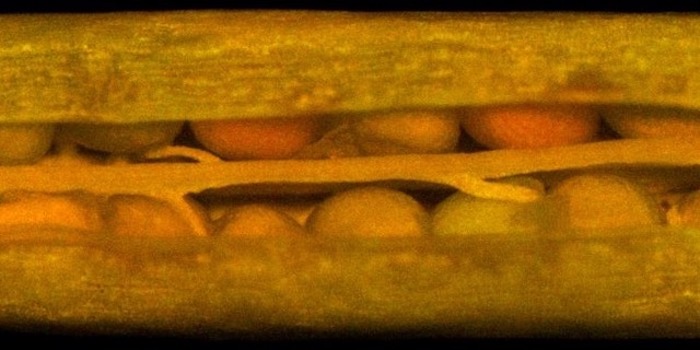
Shedding light on Arabidopsis seed oil biosynthesis
The Plant Cell: In a NutshellDeslandes-Hérold et al. explore the integration of the PRK/Rubisco shunt into green embryo photosynthesis and metabolism.
Gabriel Deslandes-Hérold, Melanie R. Abt, and Samuel C. Zeeman, ETH Zurich
Background: Light promotes the accumulation of storage lipids during development of oilseeds with…
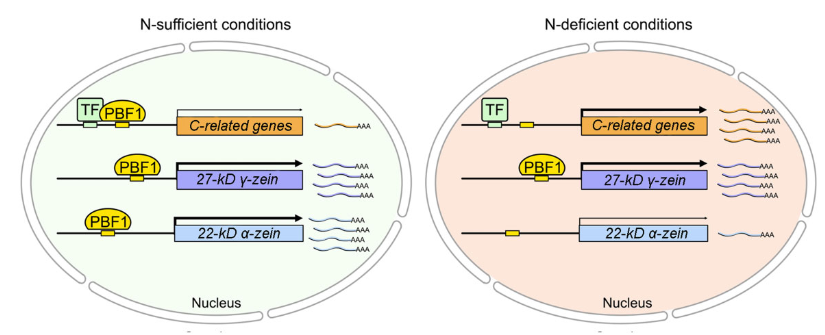
Nitrogen-dependent binding of the transcription factor PBF1 contributes to the balance of protein and carbohydrate storage in maize endosperm (Plant Cell)
Plant Science Research WeeklyThe majority of maize endosperm is made of starch (70%) and proteins (10%) and their biosynthesis is a complex process which involves many enzymes. N-containing compounds, such as enzymes, amino acids, and nucleotides are crucial for C metabolism. Thus, when N levels are altered, the storage of proteins…

